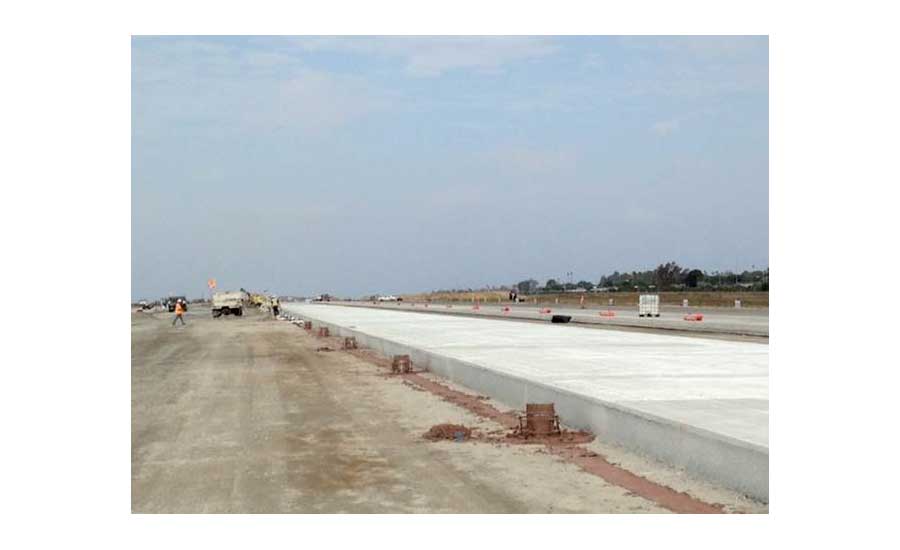Congress is making headway on reauthorizing Federal Aviation Administration programs: The Senate approved a measure that hikes airport construction grants a solid 12% but only for one year. Construction and airport officials now have swiveled to focus on the House, where a six-year FAA measure has been in a holding pattern for weeks.
Congress must pass legislation by July 15—when a stopgap authorization runs out—to keep the FAA in operation, even temporarily.
The Senate bill, approved on April 19 by an overwhelming 95-3 vote, barely qualifies as long term, extending only through Sept. 30, 2017.
The legislation—shepherded by commerce committee Chairman John Thune (R-S.D.), with the panel’s top Democrat, Bill Nelson (Fla.)—is a mixed bag on key construction issues. On the plus side, it increases FAA Airport Improvement Program (AIP) grants 12%, to $3.75 billion, in 2017. AIP aid helps to fund runways, taxiways and other infrastructure.
But the bill doesn’t raise the $4.50 cap on passenger facility charges (PFCs), another important revenue source for airport construction projects. FAA on March 31 estimated that 2016 PFC collections will total $3.13 billion, up 3% from 2015. Airport and construction groups have long been pushing for a higher PFC ceiling, which last was hiked in 2000.
Looking at the Senate bill, Brian Deery, senior director of the Associated General Contractors of America’s highway and transportation division, says, “We’re happy that there was an increase in the AIP funding, and we’re disappointed that there wasn’t an increase in the PFC cap.” Deery adds, “There’s still huge aviation infrastructure needs out there.”
The Senate vote ends one stage of the search for a new FAA measure. “It’s up to the House now to respond and do their own bill and try to get a bill in conference,” says Jay Hansen, National Asphalt Pavement Association executive vice president.
The House Transportation and Infrastructure Committee on Feb. 11 cleared a six-year FAA bill that lifts AIP funding 7%, to $3.6 billion, in 2017. It also has further annual hikes for the program, topping out at a little less than $4 billion in 2022.
But the House panel’s bill, the Aviation Innovation, Reform and Reauthorization (AIRR) Act, has yet to make it to the floor for a vote. House Republican leaders in late February put off floor action on the AIRR Act in the wake of opposition to a provision championed by committee Chairman Bill Shuster (R-Pa.) that would remove the FAA’s air-traffic-control operations role, setting it up as a nonprofit, non-federal entity. The Senate-passed bill keeps air traffic control under the FAA.
Shuster appears to be standing firm in pursuing air-traffic-control restructuring. He said in an April 19 statement that he would “take a look at” the Senate-passed bill, but added that “we will continue to push forward with the AIRR Act.”
Shuster said, “Transformational air-traffic-control reform is absolutely necessary to end the unacceptable status quo at the FAA and to ensure the future of America’s aviation system.” Hansen says it will be up to House GOP leadership to determine whether the air- traffic-control shift will be in the chamber’s final version of the FAA bill.
The House committee’s measure also leaves the $4.50 PFC limit in place. A floor amendment to raise the cap is theoretically possible. Hansen says, “But in this political environment? I don’t see it happening.”
The House committee and Senate FAA measures also set new requirements governing unmanned aircraft systems, or drones, a technology that is becoming more popular for construction-related purposes and in general. The Senate bill includes a new mandatory aeronautical and safety exam for drone operators. Operators of drones weighing less than 0.55 lb would be exempt.
The bill also directs the FAA and the National Institute of Standards and Technology to develop “risk-based, consensus industry airworthiness standards” for drone safety. Sen. Dianne Feinstein (D-Calif.) opposes another provision that would expand federal preemption of state and local drone laws, she says.



